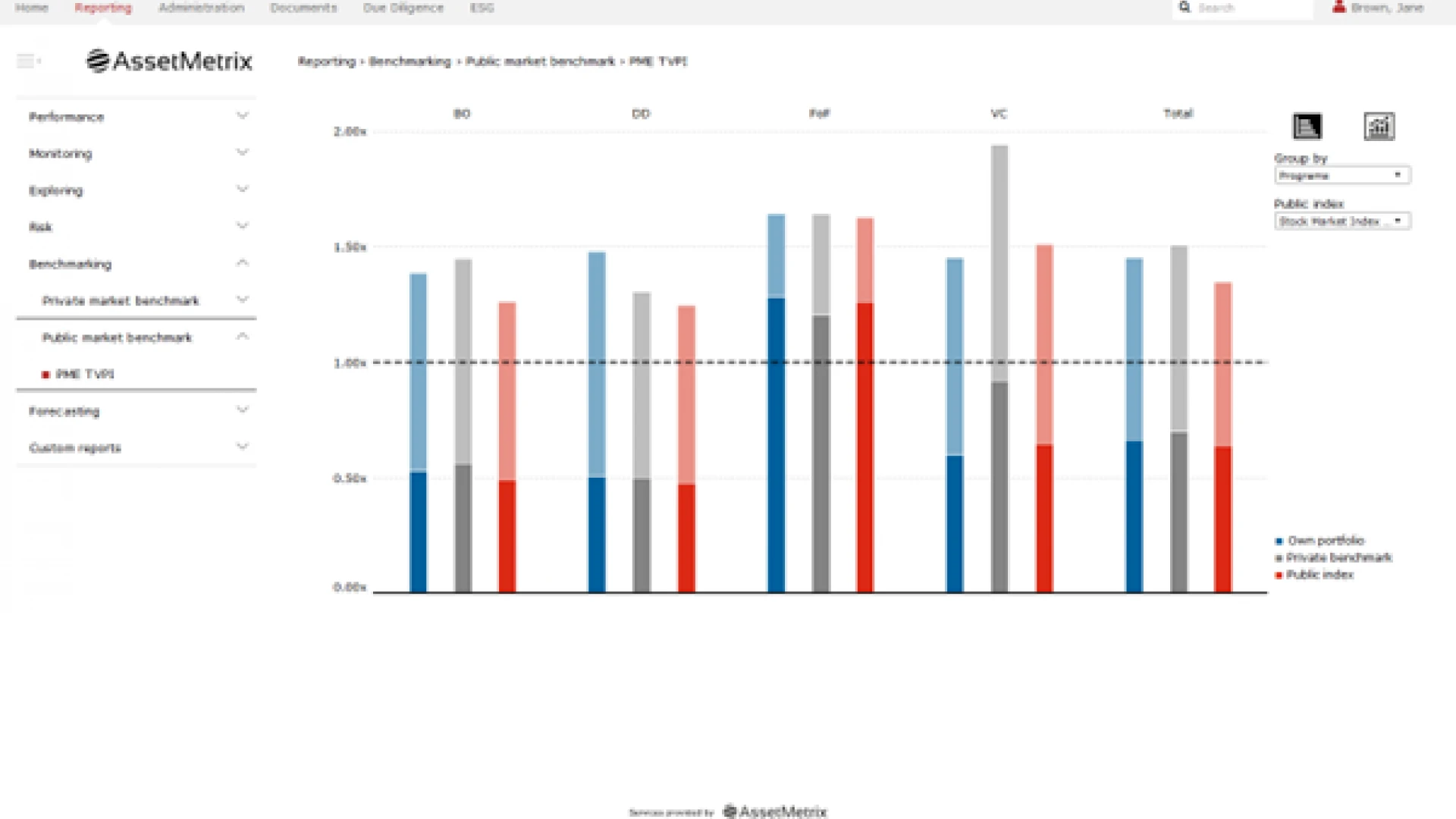- Innovation


- AMx PR
- 16.04.2020
- 7 min read

How can Portfolio Analytics for private capital support portfolio analysis and planning?
The performance of private capital investments has traditionally been measured using metrics such as Total Value-to-Paid-In (TVPI) or Internal Rate of Return (IRR). However, these condensed individual values on their own have only limited informative value – they should therefore be compared with similar investments in the private or public capital market within the framework of benchmarking. Only such a comparison provides meaningful information about the success or failure of the investment strategy of the portfolio under consideration.
How does benchmarking for private capital work?
There are basically two ways to compare the performance of private capital portfolios: Either similar investment opportunities (funds of funds, funds, or portfolio companies) within the private capital market are used – in which case we speak of private market benchmarking. On the other hand, one can ask how profitable a similar investment in the public capital market would have been instead – so-called public market benchmarking.
How can investments in private capital be considered from a risk management perspective?
The risk of private capital portfolios can be assessed using Value-at-Risk (VaR): Based on robust correlation models and in conjunction with expected returns and standard deviations for various private capital segments and target regions, the maximum expected loss amounts can be determined at various confidence levels. The information can be based on a one-year or multi-year period and presented as a relative percentage or as an absolute amount relative to the current value of the portfolio plus any future payment obligations. The inclusion of correlations within the portfolios under review (composed of investments with different years of issue, segments, or regional focus) makes diversification effects visible.
How can future cash flows of a private capital portfolio be predicted?
If one wants to look into the future and estimate what cash flows and performance can be expected from a private capital portfolio, it is necessary to model all investment objects contained in it over their entire life cycle. A look at past patterns of incoming and outgoing payments of typical sub-segments of the overall market allows the derivation of patterns that can be described by a mathematical formula system. In addition, the identified patterns must be supplemented and modified by the prevailing macroeconomic environment, as this is the key factor determining the expected overall performance of the respective investment.
What data requirements are necessary to analyze a private capital portfolio?
In principle, the availability of data in the field of private capital is still limited – even if increasing standardization and the emergence of market databases in recent years have created the conditions for deeper analysis. However, unlike in liquid market segments, valuations of investment properties are largely carried out only on a quarterly basis, so that the frequency of data is low. The challenge in the design and development of portfolio analytics is therefore by no means to deal with “big data”, but rather to deal with incomplete data.
Need more information?
We would be delighted to present our Portfolio Analytics module in detail and show you how you can benefit from state-of-the-art analytics as well as which statistical models our analyses are based on.
Discover the power of our solutions.
Better understand how we deliver on promise. Experience the platform in action, take the opportunity to meet our experts, and challenge them on your specific needs.

